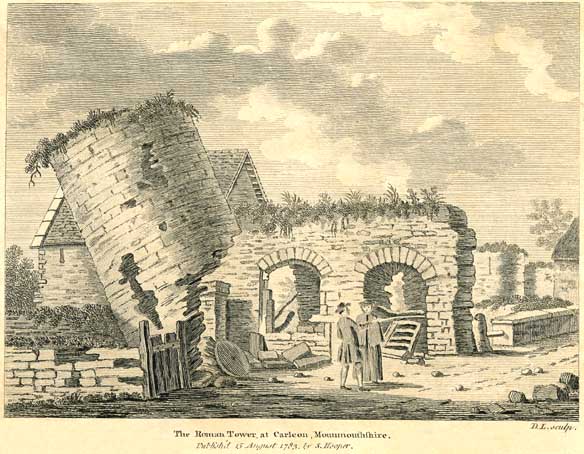|
Above: "The
Roman Tower at Caerleon, Monmouthshire" published 15th August
1783 by S Hooper. From The Antiquities of England and Wales
by Grose.
The text
accompanying the print stated:
"THE
building whose ruins are here delineated stands at Caerleon in
Monmouthshire, near the bridge laid over the river Usk; it is
generally supposed of Roman construction, there having been a
Roman station at this place, and the remains of an Amphitheatre;
Baths, and other Roman works, being still discoverable, about
and within the enceinte of its walls, which are said to have been
near three miles in compass.
It seems difficult to assign the use for which this tower could
have been built, its size for which the figures may serve as a
scale, shew it could scarcely have been intended for defence,
as from its smallness it could contain but very few men; perhaps
it might be intended for a stair-case, or as the towers in Burgh
caftle near Yarmouth, the Gariononum of the Romans, for a buttress
to prop and strengthen the adjacent wall.
This
view was drawn anno 1778"
Coxe
(1801, An Historical Tour In Monmouthshire) referred to
the above illustration and described its location as being "Close
to the southern extremity of the bridge, in the district sometimes
called the village of Caerleon". But was he confusing
this tower with another? It is difficult to tell from the illustration,
but the original text does not mention the tower being on the
Southern side of the river. (See the sketch by Samuel Loxton of the tower on the Ultra Pontem side of the river.)
Below
we can see a reworking of the print. It appeared in The History
And Legends Of Old Castles And Abbeys, part 13, published
May 1875 by John Dicks, 313 Strand, London. As well as a cobbled
together history of Caerleon this also included the legend of
The Last of the Caerleons which you can read by following
this link. |



